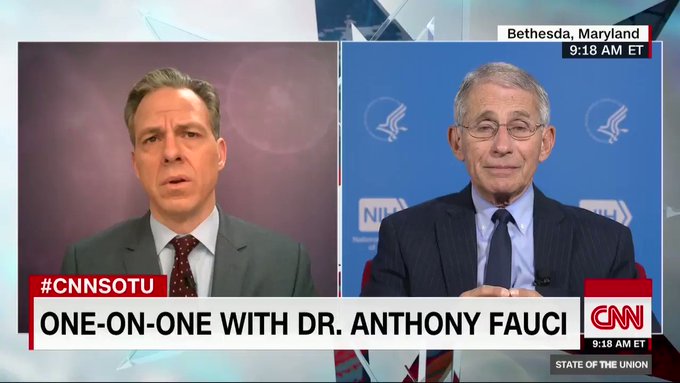Okay, someone had to ask it so it might as well be me. Why is
it that so many people on the right are skeptical about the whole idea that the
country is facing a deadly pandemic?
For the record, I’m on the right myself. I’m a lifelong
conservative-libertarian (small “l”) and, up until 2016, I was a lifelong
Republican as well. I follow and talk with people on both sides of the political
spectrum and in my journeys around the interwebs over the past few weeks, it has
seemed to me that most of the people who could be called “pandemic deniers” fall
into one of two groups: small factions of either Trump supporters or Libertarians.
Before I go further, I’ll stipulate that most Trump supporters
and Libertarians take the pandemic seriously. The deniers are subcategories of
these two groups. In my experience, I haven’t found any liberals who question
the reality of the Coronavirus pandemic but there are probably some out there
somewhere.
The Republican skeptics that I have run into online who deny
the reality and/or the severity of the pandemic seem to be almost exclusively
ardent Trump supporters on social media. Reluctant Trump voters seem to be
among the majority that are taking the pandemic and the social distancing strategy
seriously.
Among the Libertarians, it also seems to be an internet minority
who take a skeptical position. This isn’t libertarians like Justin Amash or the
Cato Institute staff. These are people who fantasize online about a “boogaloo”
(also called “the big igloo”) in which they rise up against the government.
The two groups have different rationales for denying the
pandemic. The Trump supporters believe that it is a plot to make Donald Trump
look bad and cost him the election, either by crashing the economy or by making
him seem to be an inadequate leader. The Libertarian skeptics believe that it
is a plot to take away freedoms, possibly by imposing martial law.
The skeptical attitudes can run the gamut but go farther
than mere disagreement with how the stimulus was handled. Some believe that the
entire pandemic is a hoax. Others believe that it is real but that the danger
is exaggerated. Some still say it is no worse than the flu. Others question the
social distancing strategy and theorize that more people will die from the
economic downturn than would be killed by the virus.
The two groups overlap in a few areas. One of these is a belief
in conspiracy theories. While your results may vary, the people that I see
questioning the pandemic are often the same people who think that Hillary Clinton
is a mass murdering pedophile or that Barack Obama was going to declare martial
law in the Southwest under the guise of the Jade Helm military exercise.
Another commonality is a distrust in the mainstream media.
While much of the media (not all of it) is left-leaning, that doesn’t mean that
it is always wrong. Sometimes even the leftist media is right. Quite often, the
alternative conservative media is wrong. A recent relevant example is Rush
Limbaugh who said that Coronavirus was nothing more than the “common
cold” and attacked
medical experts as part of the Deep State.
For many in these groups, there is a sort of reverse confirmation
bias in which anything the media says is not to be believed simply because the
media said it. This sort of attitude was seen among the Trump supporters of
2016 who supported Trump largely because the media and the Democrats opposed
him, reasoning that, since he had the right enemies, that was good enough for
them.
Part of the problem of denial in recent weeks was due to Donald
Trump’s waffling. When the president
worried last week that the cure might be worse than the disease, it was
followed by a wave of Trump supporters arguing that the damage to the economy
was not worth the lives that would be saved by social distancing.
The other question is why the left is not jumping on the
conspiracy bandwagon when it could appeal to partisan illogic that it would be
Donald Trump, their political adversary, who would be likely to use a Trojan
horse pandemic to seize authoritarian power. Liberals would argue that they are
more in tune with science, but the leftist assault on biological gender shows
that argument to be partly true at best.
Instead, my theory is that it is a matter of leadership.
Democratic thought leaders are united in the idea that the pandemic is a serious
threat. Where we do see conspiracy thinking among the left is the belief
that the Trump Administration is steering medical supplies to friendly administrations
and holding them back from blue states.
Now that President Trump has extended
the social distancing guidelines through April 30, it will be interesting
to see whether these skeptics follow the president’s lead or remain fixed on
how good the economy might have been if we had just let a couple of million
people die. After all, some argue, many had health problems and probably would
have died anyway.
In most cases, believing conspiracy theories over the media
stories is relatively harmless, but that isn’t the case during a pandemic. At
this point in our history, believing fake news won’t just make you look like an
idiot, it might get people killed.
Originally published on The Resurgent




